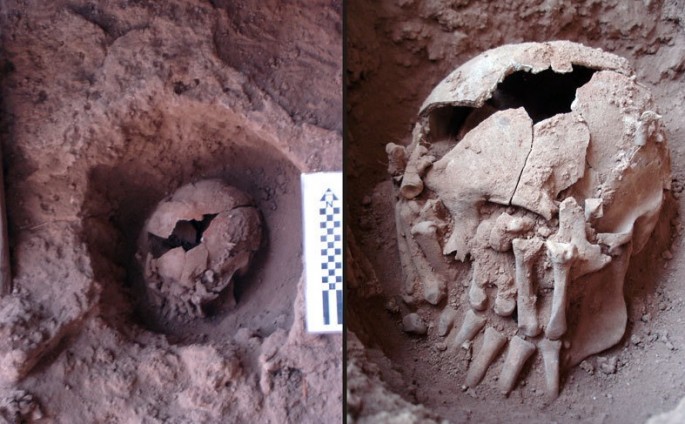Scientists have made a shocking new discovery underneath limestone slabs inside a cave in a Brazil, which involves a decapitated skull covered by amputated hands.
These bones are estimated to be 9,000 years old and is considered as evidence from the oldest known case of beheading ritual in the New World, providing clues as how this gruesome practice started in the Americas, according to researchers.
According to lead author of the study, archaeologist André Strauss from the Max Planck Institute for Evolutionary Anthropology in Germany, there were only a few Amerindian habits that impressed European colonizers more than displaying human body parts, and this was decapitation.
The oldest case of ritual beheading in South America dates back to 3,000 years ago in Peru and the oldest in North America occurred sometime between 6,000 to 8,000 years ago in Florida. Now, scientists consider this discovery the oldest one to date where this ritual decapitation in Brazil took place some 9,000 years ago.
The remains were found inside an environmentally protected, savanna type region in eastern central Brazil called Lagoa Santa or "Holy Lake" in Portuguese. In the 19th century, this region was explored by many who are in the quest of finding evidence of prehistoric humans and giant ancient animals like saber toothed cats and ground sloths.
The team focused on a site known as Lapo de Santo or "Saint's Rock Shelter" where previous discoveries include the oldest evidence of rock art in South America that involves illustrations of penises engraved on bedrock, dating back to 9,400 years ago.
Apart from this, human occupation at Lapo de Santo dates back to 12,000 years where stone tools and animal remains and bones are recovered from a shelter, suggesting prehistoric communities that subsisted on plants and smaller animals they hunted.
The ancient decapitation evidence however, was found laid inside a cave, where the hand palms cover the face of the skull, where the left hand is pointed upward covering the right side of the face and the right hand pointed downward covering the left side of the face. Strauss adds that until now, only simple burials were uncovered from Lagoa Santa.
Researchers also say that since disembodied heads are typically found in the Andes mountain range in South America, suggesting that this began as Andean practice. However, this new finding challenges the notion that ritual beheading could have origins elsewhere.
It is still unclear why these ritual beheadings took place in Lapa de Santo as researchers also reveal that the chemical and physical attributes of the bones trace back to one of the members of this ancient group that lived in the cave, meaning that this body was not considered as a war trophy. Strauss adds that the community who once lived on the site probably used these remains for rituals involving death and the universe.
These new findings are published in the journal PLOS ONE.



























